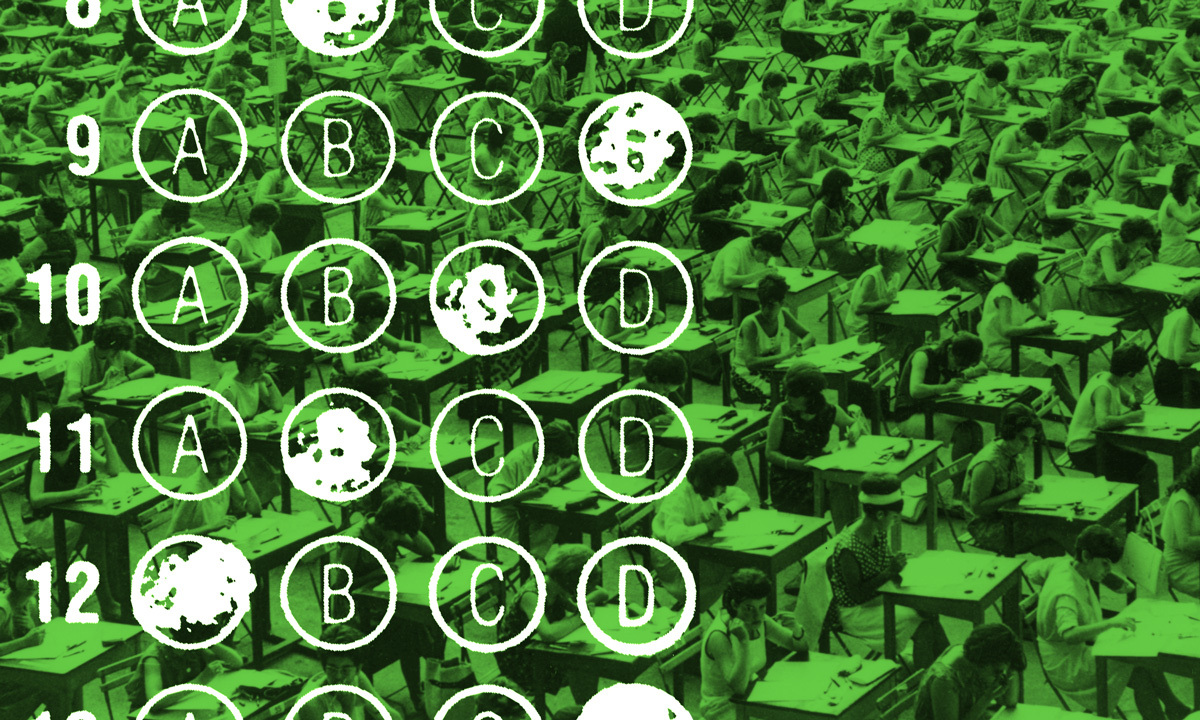Whatever the Feds Do, States Must Continue Giving Standardized Tests
Marion: These exams are essential for monitoring student achievement, evaluating programs, reporting data and signaling standards statewide.

Get stories like this delivered straight to your inbox. Sign up for The 74 Newsletter
State assessments provide crucial information that enables states to monitor and support schools, evaluate what’s working and what isn’t, and report publicly on how well they’re educating their students. As the Trump administration takes steps to downsize and dismantle the U.S. Department of Education, I worry that the federal government won’t be willing or able to hold states accountable for those functions. This would represent a loss beyond measure.
But even if it can’t or won’t, all of us here at the Center for Assessment — and many others — think states should continue to test their students anyway.
Statewide exams are designed to serve four critically important purposes: monitoring of statewide educational growth and achievement; evaluation and continuous improvement; transparency and public engagement, and the signaling of expectations for student learning.
State education leaders and policymakers must monitor students’ educational opportunities and outcomes so they can provide the kinds of resources schools need, such as reading intervention for students or specialized training for teachers or principals. High-quality statewide standards-based achievement tests are well-suited to this work because they are designed and administered to yield comparable scores across students, schools and districts.
State and local leaders also need data to help schools improve and to evaluate programs and initiatives. State tests are not designed to improve instruction in real time — that’s a job best handled by classroom assessments. But the state exams play a powerful role in clarifying the bigger picture. For instance, across a district or state, which curriculum and instructional programs are working?
To answer that question, state and district leaders conduct or commission a study, using a range of information that sheds light on student learning. Assessment results are a crucial piece of that picture. Understanding patterns in student performance in fourth grade reading, for instance, helps leaders figure out how to better support reading instruction in fourth grade.
State test results help the public understand how well K-12 education is working. Public education is a foundation of democracy and one of the largest budget items for state and local governments. The public has a right to understand how these funds are used and whether school districts provide their students with meaningful learning opportunities.
Comparable statewide test scores are an essential source of information to support efforts to build public trust and increase this type of transparency. Many other indicators of schooling, such as readiness for college or work, should also be publicly reported, but student academic outcomes should be featured.
High-quality statewide tests that embody state content standards also serve an important signaling function: They help teachers, students, principals and district leaders understand intended learning goals by providing explicit depictions of the content standards. It’s one thing to show someone a third-grade math standard; it’s another to show someone the test question that reflects that standard. That’s when the intended learning goals really come into focus.
State exams are in a uniquely powerful position to do all this work. They are subjected to higher-quality standards than any other test. They are thoroughly evaluated by local educators, state technical advisory committee members — independent national measurement experts — and fellow teachers through the U.S. Department of Education’s peer-review process.
State tests must document that they meet agreed-upon key criteria, including validity, alignment, reliability, fairness and comparability. These criteria are elaborated in the bible for testing professionals, The Standards for Educational and Psychological Testing, and the U.S. Department of Education’s Standards and Assessment Peer Review Guidance. These documents provide a shared understanding of quality and guide the work of state testing professionals and their assessment company partners.
District leaders and others have pressured states to replace their annual exams with their favorite interim or benchmark test. The rationale is simple and somewhat compelling: “We already use Assessment X three times each year, and we like the results. Why do we also need a separate state exam?”
The answer is straightforward. The level of independent review and evaluation state exams receive, and the resulting transparency, far exceeds that of any other K-12 assessment. Commercial exams are not designed to support the purposes I’ve described, and none have met the technical requirements that state assessments must meet.
Educators want state assessments to serve critical purposes, and these exams have met rigorous quality standards to do so. They are crucial tools for monitoring the achievement and growth of all students in the state, evaluating programs, providing a way to report transparently about schooling in the state, and signaling to teachers and leaders important information about the knowledge and skills students are expected to learn. States must not give up on them even if the federal government takes its foot off the pedal.
Get stories like these delivered straight to your inbox. Sign up for The 74 Newsletter

;)
